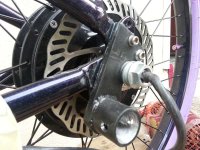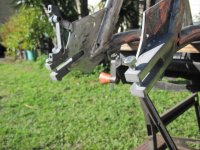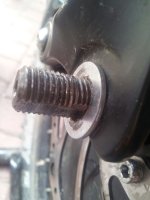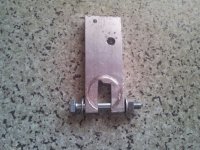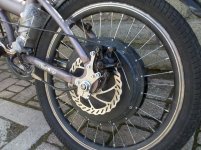John in CR
100 TW
DVDRW said:My homemade foolproof stainless steel arms...
At only 4mm thick you're jinxing yourself calling them foolproof. My very first torque arms were 3mm thick and they didn't last 10ft of the first ride before cutting into the axle like butter and letting it spin. What many miss, including the good Doctor, who uses that ridiculously hard steel for torque arms, is that hard steel is unnecessary. You actually want it to be softer than the axle, so if something gives, you damage the easily replaced/repaired part, not the motor axle. Width and a good tight fit to the axle flats are what count. My current set is 20mm wide on each side.
You've got all the tools, so adding some real thickness and making your dropouts clamping type would have been much much easier. A clamping dropout can eliminate the need for nuts at all, so there's always room to go plenty wide.
Still good work and it looks great. I hope your axle holds up, but starting with loose dropouts and using through-hole type torque arms which can never get a perfect fit without precision machining, I wouldn't run regen on the motor. Without regen they will probably be fine.







